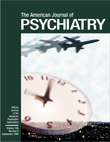Behavioral and Intellectual Markers for Schizophrenia in Apparently Healthy Male Adolescents
Abstract
OBJECTIVE: Subtle behavioral and intellectual abnormalities are often present in apparently healthy adolescents who later develop schizophrenia. The authors investigated whether these abnormalities can predict vulnerability for schizophrenia before the first psychotic manifestation. METHOD: The study consisted of linking the Israeli Draft Board Registry with the National Psychiatric Hospitalization Case Registry. The draft board tests measure intelligence, social functioning, organizational ability, interest in physical activity, and individual autonomy. Patients (N=509) were compared to nonpatients, i.e., adolescents not appearing in the National Psychiatric Registry (N=9,215), matched to patients by age, gender, and school attended at time of testing. RESULTS: Healthy male adolescents who were later hospitalized for schizophrenia had significantly lower test scores on all measures than adolescents not reported to the National Psychiatric Registry. The strongest predictors for schizophrenia were deficits in social functioning, organizational ability, and intellectual functioning. When patients were compared to matched nonpatients, the prediction model had a 75% sensitivity, a 100% specificity, a positive predictive value of 72%, and an overall rate of correct classification of 87.5%. Applied to the Israeli Draft Board Registry, the model yielded a sensitivity of 74.7%, a validated specificity of 99.7%, and a positive predictive value of 42.7%. CONCLUSIONS: This study demonstrated that simple assessment tools can predict predisposition to schizophrenia in healthy male adolescents. The model’s predictive ability does not change as a function of the time elapsed between testing and first hospitalization. This suggests that the model identifies apparently healthy individuals who will manifest the disease later who are not prodromal to psychosis. Easily applied tools allowing early identification of schizophrenia or vulnerability to it may enable early intervention.



